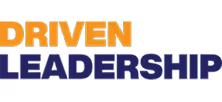Executive Coaching Programs in Seattle, WA


Leadership Training Executive Coaching Programs in Seattle, WA
Effective executive coaching and leadership training in Seattle, WA helps senior leaders, founders, and high-potential managers navigate rapid growth, hybrid work dynamics, and competitive talent markets. If you are facing a leadership transition, uneven team performance, or stalled strategic initiatives, one-on-one executive coaching programs tailored for Seattle organizations deliver focused development, measurable behavior change, and clear business impact.
Why Seattle leaders need targeted executive coaching
Seattle’s mix of fast-scaling tech companies, mature enterprise headquarters, major healthcare systems, universities, and mission-driven nonprofits creates unique leadership challenges:
- Hybrid and remote team management across dispersed geographies.
- High employee expectations for purpose, inclusion, and work-life balance.
- Rapid role expansion during funding rounds or acquisitions requiring new strategic skills.
- Intense competition for talent, making retention and culture essential.Coaching centered on these realities helps leaders make decisions faster, influence broader stakeholder groups, and improve team execution in a regional context defined by innovation and complexity.
Typical coaching objectives (what executive coaching addresses)
Executive coaching programs in Seattle commonly focus on measurable, business-aligned goals:
- Leadership transition: onboarding into C-suite, first-time executive, or post-acquisition integration.
- Performance optimization: raising individual contribution and team outcomes.
- Strategic influence: stakeholder management, board interactions, and cross-functional leadership.
- Culture and people leadership: building inclusive teams and reducing turnover.
- Decision-making under ambiguity: prioritization, risk management, and scaling judgment.
- Resilience and sustainable performance: preventing burnout and maintaining executive presence.
Common executive coaching issues in Seattle
- New leaders promoted for technical skill struggle with people management.
- Founders need help shifting from operator to strategic CEO.
- Remote-first teams suffer from alignment and accountability gaps.
- High turnover from unaddressed engagement and feedback weaknesses.
- Leaders under-invest in stakeholder communication during rapid change.
Assessment tools and diagnostic approach
Effective programs begin with evidence-based diagnostics to target coaching precisely:
- 360-degree feedback to identify behavioral gaps and stakeholder perceptions.
- Psychometric assessments (Hogan, DiSC, MBTI) to illuminate default styles and blind spots.
- Structured interviews with direct reports and peers to surface team dynamics.
- Leadership competency mapping aligned to your organization’s strategic priorities.
- Business metrics review (engagement scores, retention rates, performance KPIs) to quantify baseline impact.Combined, these tools create a clear development roadmap with baseline measures and stretch objectives.
One-on-one coaching process (what to expect)
Executive coaching follows a predictable, results-focused cadence designed to produce observable change:
- Intake and alignment: clarify role expectations, stakeholders, and top-priority outcomes.
- Assessment: deploy 360 feedback and psychometric tools, plus stakeholder interviews.
- Goal setting: translate assessment findings into 2–4 measurable coaching objectives.
- Coaching cycles: regular sessions (weekly or biweekly) that blend reflection, skill practice, and experiments in the workplace.
- Embedded practice: leaders try new behaviors between sessions with real teams and report outcomes.
- Progress checks: mid-point assessments and KPI reviews to adjust focus and tactics.
- Sustainment: transition to maintenance plan, peer coaching groups, or periodic check-ins.
Coach qualifications and what to look for
Choose coaches with proven experience and the right mix of credentials and practical exposure:
- Certification from reputable coaching bodies (ICF, EMCC) or accredited executive development programs.
- Senior-level business experience or prior roles leading teams in tech, healthcare, nonprofit, or higher education — sectors common in Seattle.
- Demonstrated use of structured assessment tools (360s, behavioral interviews, psychometrics).
- Track record of measurable outcomes (promotion rates, engagement improvements, retention changes).
- Strong facilitation and stakeholder management skills to work with boards, HR, and executive teams.
Typical engagement lengths and cadence
Coaching engagements vary by objective but typically follow these patterns:
- Short-term: 3 months for focused performance issues or transition acceleration.
- Standard: 6 months for sustained behavior change and measurable team impact.
- Long-term: 9–12 months for transformational leadership development or cultural initiatives.Session cadence usually starts weekly or biweekly, then shifts to monthly maintenance once objectives are met. Supplemental formats include intensive retreats, shadowing days, and peer coaching cohorts.
ROI examples and measurable outcomes
Executive coaching translates into business outcomes when tied to specific KPIs. Typical ROI examples organizations in Seattle report include:
- Faster time-to-impact for new executives — reduced onboarding ramp by weeks to months.
- Increased team engagement scores and improved retention of key performers.
- Higher promotion readiness and internal succession rates for coached leaders.
- Greater execution velocity on strategic initiatives due to improved alignment and accountability.
- Improved stakeholder satisfaction scores after focused communication and influence coaching.ROI is best measured by pre- and post-engagement metrics: 360 feedback shifts, engagement survey deltas, retention percentages, and specific business KPIs tied to the leader’s remit.
Common barriers and practical solutions
- Barrier: Limited leader time. Solution: Short, focused sessions with weekly micro-experiments to practice behaviors on the job.
- Barrier: Misaligned expectations between leader and organization. Solution: Stakeholder alignment sessions early in the engagement and co-created success metrics.
- Barrier: Coaching seen as remedial. Solution: Position coaching as a strategic investment tied to measurable outcomes and growth pathways.
Embedding and maintenance (sustaining gains after coaching)
Sustained leadership change requires systems, not just sessions. Best practices:
- Create a 6–12 month development plan with booster sessions scheduled.
- Build internal peer coaching groups or leadership pods to maintain practice and accountability.
- Integrate coaching goals into performance conversations and talent reviews.
- Use periodic 360 check-ins and pulse surveys to measure maintenance of behavior change.
ConclusionLeadership Training Executive Coaching Programs in Seattle, WA deliver targeted, measurable development for leaders facing transitions, scaling challenges, and hybrid work complexities. When assessments, experienced coaches, and business-aligned goals are combined with structured practice and measurement, coaching produces sustained behavior change that improves team performance, retention, and strategic outcomes in the unique Seattle market.

